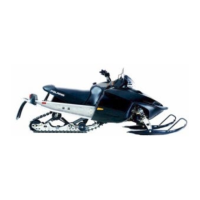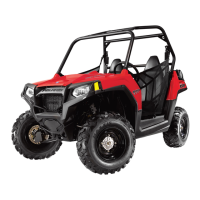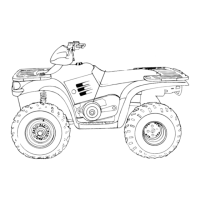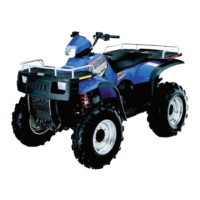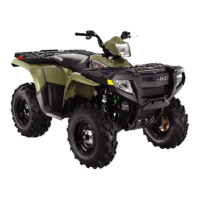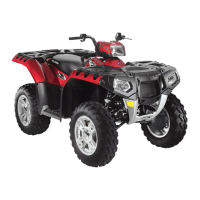4.8
FUEL INJECTION
ELECTRONIC FUEL INJECTION
Principal Components
The Electronic Fuel Injection (EFI) system is a complete engine
fuel and ignition management design. This system includes the
following principal components:
• Fuel Pump
•Fuel Rai
l
• Fuel Line(s)
• Fuel Filter(s)
• Fuel Injectors
• Pressure Regulator
• Throttle Body / lntake Manifold
• Engine Control Unit (ECU)
• Ignition Coils
• Coolant Temperature Sensor
• Throttle Position Sensor (TPS)
• Crankshaft Position Sensor (CPS)
• Intake Air Temperature and Barometric Air Pressure
Sensor (T-BAP)
• Wire Harness Assembly
• Check Engine Light (MIL)
EFI Operation Overview
The EFI system is designed to provide peak engine performance
with optimum fuel efficiency and lowest possible emissions.
The ignition and injection functions are electronically
controlled, monitored and continually corrected during
operation to maintain peak performance.
The central component of the system is the Bosch Engine
Control Unit (ECU) which manages system operation,
determining the best combination of fuel mixture and ignition
timing for the current operating conditions.
An in-tank electric fuel pump is used to move fuel from the tank
through the fuel line. The in-tank fuel pressure regulator
maintains a system operating pressure of 39 psi and returns any
excess fuel to the tank. At the engine, fuel is fed through the fuel
rail and into the injectors, which inject into the intake ports. The
ECU controls the amount of fuel by varying the length of time
that the injectors are "on". This can range from 1.5-8.0
milliseconds depending on fuel requirements. The controlled
injection of the fuel occurs each crankshaft revolution, or twice
for each 4-stroke cycle. One-half the total amount of fuel needed
for one firing of a cylinder is injected during each injection.
When the intake valve opens, the fuel/air mixture is drawn into
the combustion chamber, ignited. and burned.
The ECU controls the amount of fuel being injected and the
ignition timing by monitoring the primary sensor signals for air
temperature, barometric air pressure, engine temperature, speed
(RPM), and throttle position (load). These primary signals are
compared to the programming in the ECU computer chip, and
the ECU adjusts the fuel delivery and ignition timing to match
the values.
During operation the ECU has the ability to re-adjust
temporarily, providing compensation for changes in overall
engine condition and operating environment, so it will be able
to maintain the ideal air/fuel ratio.
During certain operating periods such as cold starts, warm up,
acceleration, etc., a richer air/fuel ratio is automatically
calculated by the ECU.
Initial Priming / Starting Procedure
NOTE: The Injection system must be purged of all
air prior to the initial start up, and/or any time the
system has been disassembled.
If the EFI system is completely empty of fuel or has been
disassembled and repaired:
1. Cycle the key switch from “OFF” to “ON” 6 times,
waiting for approximately 3 seconds at each “ON” cycle to
allow the fuel pump to cycle and shut down.
2. Once step 1 is completed, turn the key switch to “START”
until the engine starts or 5 seconds has passed.
3. If the engine failed to start, repeat step 1 for 2 more cycles
and attempt to start the engine.
If the engine fails to start, a problem may still exist, and should
be diagnosed.
NOTE: Accurate testing of EFI components is
recommended utilizing the Polaris Diagnostic
Software (dealer only).
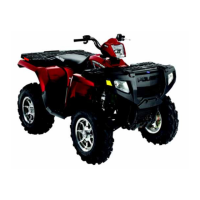
